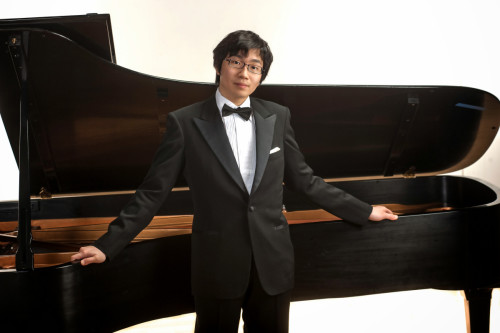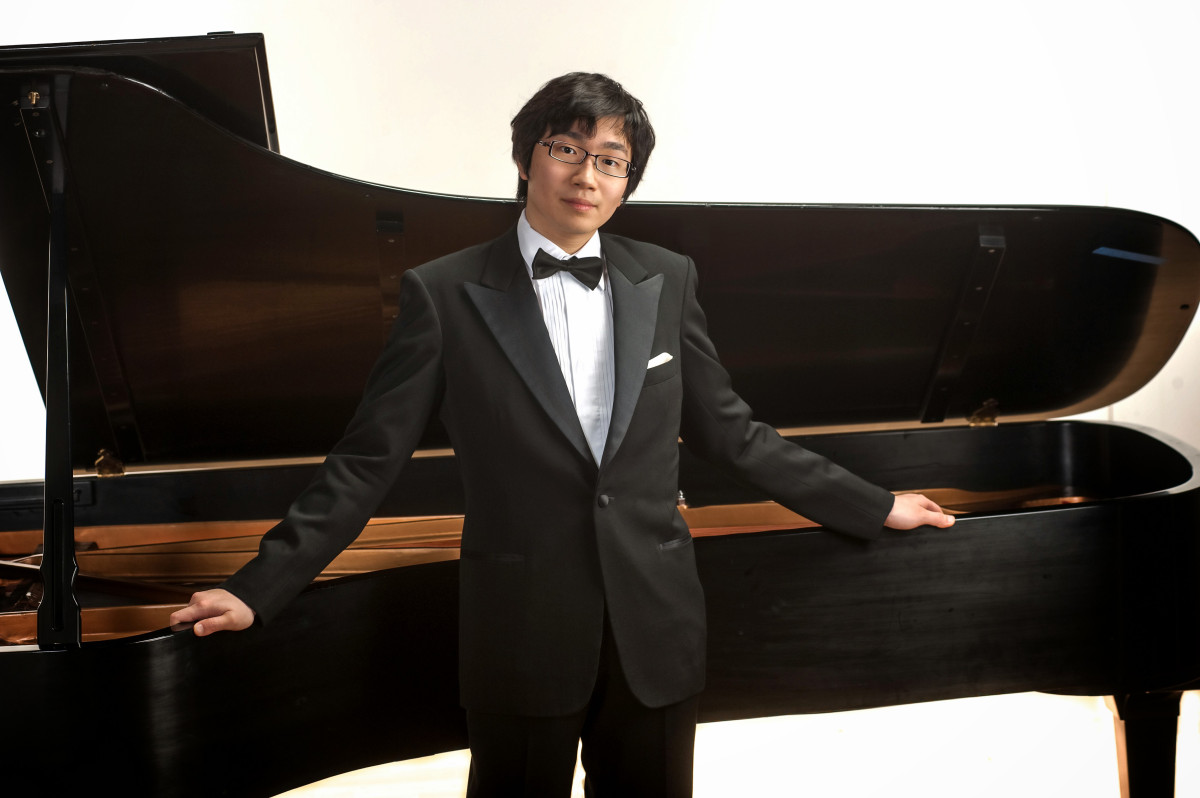 United Kingdom Beethoven, Liszt, Toru Takemitsu, Scriabin: Tomoki Sakata (piano) Keyboard Charitable Trust at Steinway Hall, London, 25.4.2018. (JB)
United Kingdom Beethoven, Liszt, Toru Takemitsu, Scriabin: Tomoki Sakata (piano) Keyboard Charitable Trust at Steinway Hall, London, 25.4.2018. (JB)

Beethoven – Piano Sonata No.16 in G major
Liszt – Rhapsodie espagnole S.254/R.90
Takemitsu – Les yeux clos
Scriabin – Piano Sonata No.5
In many respects Steinway Hall is an admirable place for a young pianist’s London debut. It’s intimate and small and easily filled, and also has a fine acoustic. But something like a third of this charming room is occupied by the latest Steinway concert grand itself. It is very easy for the instrument to become the sole focus of the performance. This is a major challenge the young pianist must meet.
Grigory Sokolov is known to arrive ahead of his recitals with a complete piano mechanic’s kit, working on the instrument until he and the Steinway are speaking the same language. Naturally, Steinway & Sons would frown on any young pianist wanting to follow Maestro Sokolov’s routine.
So the young pianist is thrown back on his kinaesthetic skills. The OED defines kinaesthesia as awareness of the position and movement of the parts of the body by means of sensory organs (proprioceptors) in the muscles and joints. That sounds pretty sexy. Any young pianist worth his salt will tell you that it is, too. He is required to feel his way. The determinant is his touch.
Tomoko Sakata, Japanese, twenty-four, outright winner of the 2016 First Prize and six other prizes at the International Franz Liszt Piano Competition in Budapest, overwhelmed – I think has to be the right word – the full house at Steinway Hall. At the end of the concert Noretta Conci-Leech, co-founder of The Keyboard Charitable Trust, declared it the best concert I have ever heard in this hall.
I am quite sure that Sakata had not been busy with a piano mechanic’s kit before his concert. Nevertheless, he made it clear to the Steinway who was in charge. I am reminded of Ronald Knox winning the theology prize at Oxford. Candidates were given three hours to write about the miracle of Jesus walking on the water. At the end of three hours Knox had written a single sentence: When the water saw its Lord it blushed.
This is authoritative playing which I have never heard in any pianist of any age. Yet it is measured. Astonishingly measured. The programme was well-chosen to spotlight the talent.
Beethoven’s Sonata in G Op.31 No.1 presents some interesting challenges to the pianist. These were met head-on. The sonata was written between 1801 and 1802, when public appetite for Beethoven’s music was at its lowest. The composer was determined to do something about this. He tried some shock tactics, such as the opening Allegro vivace, while the first theme is clearly in the home key (lull them into false security first!) the second theme oscillates between distant B major and B minor. It feels as though Sakata has taken us inside the Steinway here.
The Adagio grazioso is sprinkled with showy cadenza passages and trills which Sakata delivers with steely determination as though he wants to break the strings. Beethoven’s pastiche of the bel canto operatic composers is delivered po-faced. And all the more refreshing for that. Later, Rossini would take up a collection for Beethoven in Vienna to aid the struggling composer. It seems that Rossini’s admiration for Beethoven was not reciprocal.
The Rondo allegretto presto was dispatched with charm and fun. Has anyone ever heard those two qualities delivered so effortlessly in Beethoven? I haven’t.
The Liszt Spanish Rhapsody was the romp we have come to expect. But in the Sakata performance there were sonorities hitherto unheard. His kinaesthetic skills were to the fore. He seemed to become the instrument, not just its partner. The liquidity of the runs was dazzling, as was the rich sonority of the chords, whether forte or piano.
Toru Takemitsu (1930-1996) was enormously influenced by John Cage (and vice versa). Cage had studied Zen Buddhism with Dr Suzuki, a world-outlook which remained with him for the rest of his life. Takemitsu was equally influenced by Cage’s use of I Ching (Chance Operations) in the arts. Cage’s lifetime partner, Merce Cunningham, based his highly original dance company on this philosophy. Feel the steps as you invent them. In truth, Martha Graham had done some of this ahead of Cunningham.
Les yeux clos (Closed Eyes) said to be based on a sculpture, is probably Takemitsu’s best known piano piece. For me it remains one of the most beautiful piano pieces of the twentieth century. And this because or maybe in spite of, not containing a perfect cadence nor a chord which is not a discord.
It is, however, shot through with what have been called Takemitsu’s spiritual values. But I dislike that word. So did Cage. And so, indeed did Takemitsu. So what is the sense intended here? The Unknown? Yes, except that that is too generic a term. An unknowablenesss which by the profound fact of its being unknowable becomes an attractive form of belief. This concept is found in many schools of Buddhism and is the very foundation of Taoism (from which Buddhism grew). The belief surfaces again in Keats’s negative capability: enjoying and exploring the unknown.
This was the moment in the evening when Tomoki Sakata fell foul of a composer’s requirements. And this because he had failed to embrace the beliefs outlined crudely and briefly in my previous paragraph. He rapped out the notes as though full of wrath and with the devil on his tail. A destroyer rather than a believer.
Respect and authority were restored however for the final piece, Scriabin’s Fifth Sonata Op.53, written in Lausanne in 1907. But religious forces are at work here too as we can see from an epigraph which Scriabin left with his work. I have no knowledge of Russian but this Wikipedia translation gives some idea as to what the composer was up to:
I call you to life O mysterious forces
Drowned in the obscure depths
Of the creative spirit, timid
Shadows of life, to you I bring audacity!
Tomoki is saved and promoted by his own promotion of that last line. The piece yearns after key-centre but never arrives at one, always to remain afloat (less well realised by this great young pianist). The result is an imperfection based on perfection. A joy for all who heard it. I fancy Scriabin would have joined in such applause. That is, if any applause is appropriate for such yearning music whose glaring honesty tells you that it has not arrived.
Our applause brought him back several times and finally he conceded a Rachmaninoff Moment musical. That brought him back several more times. He then said, Do you want me to make a speech? To which someone whispered No, we should let you go now. And so we did.
I for one cannot wait for his next London appearance. And perhaps that concert might include the Liszt Sonata and Mephisto Waltz. Or is that just me getting greedy?
Jack Buckley
For more about conerts at the Steinway Hall click here.

Takemitsu’s ‘Les yeux clos’ not containing a perfect cadence or a chord which was not a dischord? Technically true but if the piece didn’t have an implied tonality it would not be pleasing to listen to. It sounds as if this pianist didn’t see it that way.